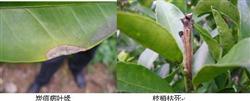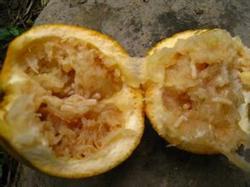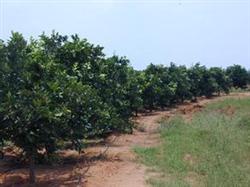How to control anthracnose of citrus

The main results are as follows: (1) rational fertilization. Increase the application of organic fertilizer, such as plant ash and rapeseed cake fertilizer, in order to improve the physical and chemical properties of soil and create good conditions for root growth; according to the determination of soil properties, the formula fertilization of nitrogen, phosphorus, potassium and micro-fertilizer was carried out. (2) reasonable pruning and fruit thinning. Combined with garden cleaning and annual management, cut off the branches of diseases and insect pests, clean up the dead branches and leaves and burn them centrally, so as to reduce the source of pathogens; in summer, short pruning should be carried out according to the tree potential to improve the ventilation and light transmission of the orchard; timely fruit thinning and control of the amount of hanging fruit to maintain the disease resistance of the tree body. (3) timely application of pesticide for protection. It was treated separately according to the occurrence of anthrax in the area and orchard over the years. For orchards with serious damage to new shoots, spray protection is needed during spring shoot germination and each shoot emergence period. For the old orchard, the fruit drop before harvest and the orchard with serious pedicle rot during the storage period, after fruit setting, combined with the prevention and control of scab and black spot disease, spray once every 20 days or so, and pay special attention to the chemical control in the plum rain season. From late August or early September, spray twice according to the rainfall to protect the pedicel fruit from infection. The effective agents are: a) 80% mancozeb wettable powder 600x liquid; b) 25% imidamide EC 500g 1000 times liquid or 50% imidamide manganese salt complex wettable powder 1500 times liquid; c) 10% methyl ether benzoconazole water dispersible granules 2000mg 2500 times; d) 77% copper hydroxide wettable powder 800g 1000 times.
- Prev

Control of citrus fruit fly in May
Citrus fruit fly is commonly known as citrus maggot, and the killed fruit is called maggot fruit. It is a national plant quarantine pest before 2009, harming four types of citrus, including pomelo, lime, navel orange and broad-skinned citrus, among which limes and sweet oranges suffer the most. Its larvae feed on the petal in the fruit, making the fruit yellow before ripening, reddish in yellow, and seriously damaged.
- Next

Six methods of Irrigation in Citrus Orchard
The main results are as follows: (1) Amoy irrigation is also called immersion irrigation. That is, the trench is opened between the rows of the citrus orchard and connected with the water transport channel, and the irrigation water seeps into the soil through the bottom and wall of the ditch. This method is often used at present. (2) flood irrigation builds ridges in the orange orchard and diverts water from the orchard. This method consumes a lot of water, the topsoil is easy to harden, and the soil is not permeable.
Related
- Moge, come on! The staff of the peasant association in the producing area of cantaloupe were frightened when the crowd gathered.
- Causes and Solutions of low Fruit setting rate of Apple
- Symptoms and control measures of passion fruit virus disease
- Fruit growing lesson: how do apple orchards keep high yields?
- Can you build orchards in the mountains? What are the pros and cons?
- How to manage the coloring period of Crisson grape?
- This paper introduces the processing technology of two kinds of fig products.
- How much is a month for retired teachers in rural areas by 2020?
- How can strawberry planting increase sugar content? We should pay attention to management in many aspects.
- What are the cultivation techniques on how to improve the yield of golden fruit?

